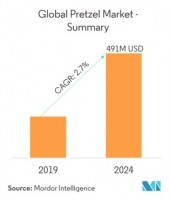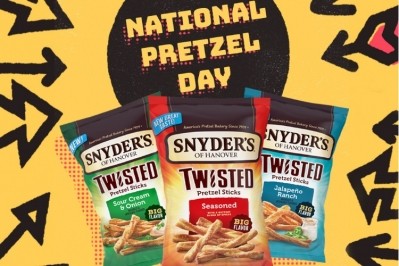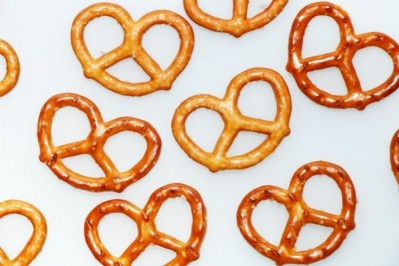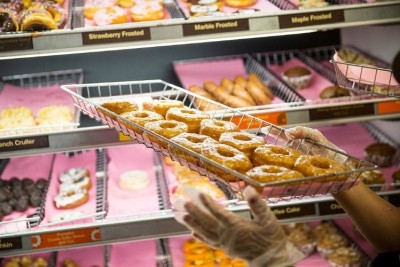Roasty, fatty and sweaty: Study determines aroma profile of freshly baked soft pretzels
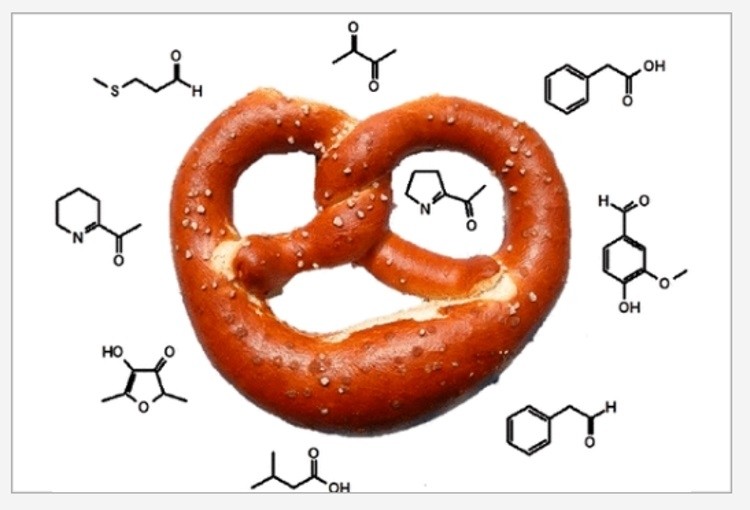
What makes pretzels unique is the lye (washing soda) treatment of the dough and the sprinkling of coarse salt before baking.
According to the study published in Journal of Agricultural and Food Chemistry, 17 trained panellist were able to detect 28 odor-active compounds in the lye-dipped, freshly baked knotted dough.
Global pretzel market
The global pretzel market is projected to grow at a 2.7% CAGR between 2016 and 2024, to reach a value of $491.30m, according to market researcher Mordor Intelligence.
Soft bread-type pretzels are enjoyed the world over, however, there has been a rise in the consumption of hard pretzels, touted as a healthier snack.
The craft beer movement – pairing brews with pretzels – has also driven demand.
The US is the leading country in terms of consumption and production, with 80% of both hard and soft-bread type pretzels being produced in Pennsylvania.
Manufacturers are getting more creative with pretzels, launching cholesterol- and gluten-free variants containing non-GMO whole grain flour. Additionally, the introduction of exotic flavors like mocha, banana, garlic, bacon and cheddar is catering to the diversified tastes of consumers.
Major market players include Auntie Anne’s, Boulder Brands, ConAgra, Frito-Lay, Herr Foods, J & J Snacks, Mars, Mr. Pretzel, Pretzels Inc. and Snyder’s-Lance.
Testers could detect malty, mushroom-like, carrot-like, honey-like, cooked-potato-like and cheesy notes, but the strongest overtones were roasty (popcorn-like) and fatty, followed by buttery, caramel-like and sweaty.
Responsible for these are chemical compounds, such as 4-hydroxy-2,5-dimethyl-3(2H)-furanone (caramel-like), 2-acetyl-1-pyrroline (roasty, popcorn-like) and phenylacetic acid (honey-like).
The science of scents
To reach this conclusion, researchers from the Technische Universität München in the heartland of Bavaria – where the pretzel has been used as an emblem by bakers since the 12th century – adopted a molecular sensory science approach called sensomics, which determines how chemical compounds combine to produce a particular aroma perception in the human brain.
Firstly, they verified the signature pretzel musk emanates from the brown outer crust of the bread, rather than the pale inner crumb, which had quite a bland odor.
Freshly baked soft pretzels – made from wheat flour (type 550), baker’s yeast, sodium chloride and water – were obtained from a local bakery.
The crusts were peeled off, frozen in liquid nitrogen and finely ground before being suspended in a solvent, filtered and extracted. Finally, the volatiles were isolated to create an extract.
Then, they used a process called aroma extract dilution analysis to identify specific odorous compounds within the perfume.
Blind sniff tests
Seventeen trained sensory panelists used reference smells to identify and rank the intensity of the different olfactory notes within the overall pretzel fragrance.
The pretzel powder was compared in a blind test to wheat and rye bread, and all 17 panelists recognized the difference, confirming that the aroma profile of freshly baked pretzels is indeed unique and differs from that of wheat bread, although the dough ingredients are similar.
The researchers also reproduced – for the first time – the pretzel’s buttery, sweaty scent, by combining key olfactory compounds with ethanol.
According to the researchers, when sprayed in a room, the fragrance produced “a very good pretzel aroma impression.”
They concluded this technology could eventually be used to enhance the aroma of baked goods.
Study:
Authors: Sebastian Schoenauer and Peter Schieberle
J. Agric. Food Chem.201967257110-7119
Publication Date: June 4, 2019
